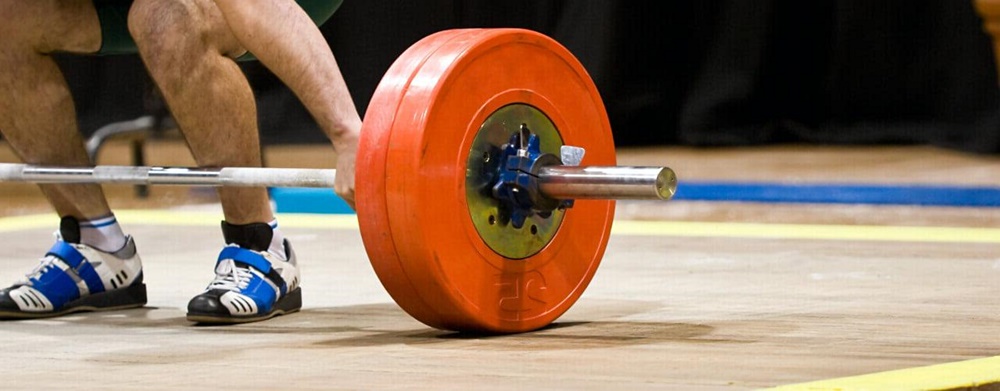Last Updated on: 18th December 2024, 12:32 pm
Footwear is crucial in fitness activities, providing support and reducing injury risk. Proper shoes offer cushioning and support, enhancing workout effectiveness. Fitness footwear has evolved significantly, with modern designs incorporating advanced technology for improved functionality and comfort.
- Proper footwear is essential for optimal fitness performance.
- The right shoes can enhance training efficiency, impacting running form and weightlifting ability.
- Footwear is a tool for enhancing physical capabilities and protecting the body.
Choosing the right shoes is vital for achieving fitness goals, as they are more than just an accessory.
Understanding the Biomechanics of Footwear in Fitness

Footwear significantly affects the biomechanics of walking, running, and other fitness activities. Proper shoes enhance movement efficiency, while improper ones can cause misalignment and increase injury risk. Shoes absorb impact, protecting joints and muscles.
- Improper footwear can disrupt body alignment, leading to various issues.
- Misalignment strains ankles, knees, and hips, increasing injury risk.
- Shoe design involves biomechanics, material science, and ergonomics.
Choosing the right footwear is crucial for health and performance, enabling safer and more effective training.
Types of Footwear for Different Fitness Activities

Selecting the right footwear is as important as the workout itself. Different activities require specific shoes to enhance performance and reduce injury risk.
Running Shoes: Features and What to Look For
- Designed for forward motion with cushioning to absorb impact.
- Look for a comfortable fit, good arch support, and a flexible sole.
- Proper running shoes reduce strain on feet and legs.
Cross-Training Shoes: Versatility for Various Activities
- Support a range of movements, from lateral cuts to jumps.
- Wider soles provide stability for various exercises.
- Ideal for mixed workouts, ensuring preparedness for any activity.
Specialty Footwear: Shoes Designed for Specific Sports
- Specialized shoes enhance performance in activities like cycling and weightlifting.
- Cycling shoes have stiff soles for better power transfer.
- Weightlifting shoes offer a stable base and slight heel lift for proper form.
Choosing activity-appropriate footwear improves performance and protects against injuries, ensuring a safe and effective fitness journey.
The Role of Footwear in Injury Prevention

Footwear is essential for preventing fitness-related injuries. The right shoes can prevent sprains, strains, and stress fractures. Recognizing the role of shoes in injury prevention is key to a safer fitness routine.
- Cushioning, support, and fit are crucial for injury prevention.
- Cushioning absorbs shock, protecting joints.
- Support keeps feet aligned, reducing overpronation or supination risk.
- A good fit prevents blisters and allows natural foot movement.
Real-life examples show how proper footwear prevents injuries, highlighting the importance of selecting the right shoes for fitness activities.
Choosing the right shoes is an investment in health and fitness. Proper footwear enables effective training while protecting against injuries. Every step in fitness begins with the right shoes.
Footwear and Enhanced Performance

The right shoes enhance performance, acting as a catalyst for improvement. Advances in footwear technology allow athletes to push limits further. Innovative shoe designs offer support, durability, and precision.
Athletes report significant performance improvements after switching to activity-specific shoes. This feedback underscores the importance of selecting the right shoes for your fitness regimen.
Choosing the right footwear is about unlocking potential. Whether a casual jogger or competitive athlete, the foundation of fitness lies in the shoes. They enable reaching new heights and achieving fitness goals with confidence.
Every stride is influenced by footwear. Investing in the right pair enhances performance and protects the body from intense activity. Let shoes be the stepping stones to a fitter, healthier you.
Choosing the Right Footwear for Your Fitness Journey

Selecting the right footwear is crucial in your fitness journey. Shoes should cater to your foot type, providing support for high arches or flat feet. Consider these factors:
- Activity Level: Intense workouts require shoes with more cushioning and durability.
- Exercise Surface: Different surfaces require specific traction and cushioning.
Professional fitting is important. Experts offer personalized recommendations to prevent injuries.
When trying on shoes:
- Wear workout socks.
- Test comfort and support by mimicking workout movements.
- Trust your feet for the right fit.
Shoes should be comfortable from the start, without a break-in period. The right footwear is an ally on your fitness path, protecting your body and helping achieve personal bests.
Maintenance, Replacement, and Sustainability of Fitness Footwear

Maintaining fitness footwear is essential for longevity and performance:
- Cleaning: Keep shoes clean and dry them naturally.
- Alternating Shoes: Reduce wear by not using the same pair daily.
Know when to replace shoes by checking for wear signs like diminished cushioning. Running shoes typically need replacement every 300-500 miles.
Sustainable practices are important:
- Choose brands using recycled materials and aiming for carbon neutrality.
- Recycle or donate old shoes.
- Support companies with recycling programs.
Embracing sustainability benefits the environment and promotes a healthier lifestyle, ensuring gear meets performance and ethical standards.
Wrapping It Up
Footwear is key to fitness success, protecting and enhancing performance. The right shoes balance support and freedom, preventing injuries and boosting achievements. They play a pivotal role in every fitness step, helping achieve personal bests with confidence and care.

